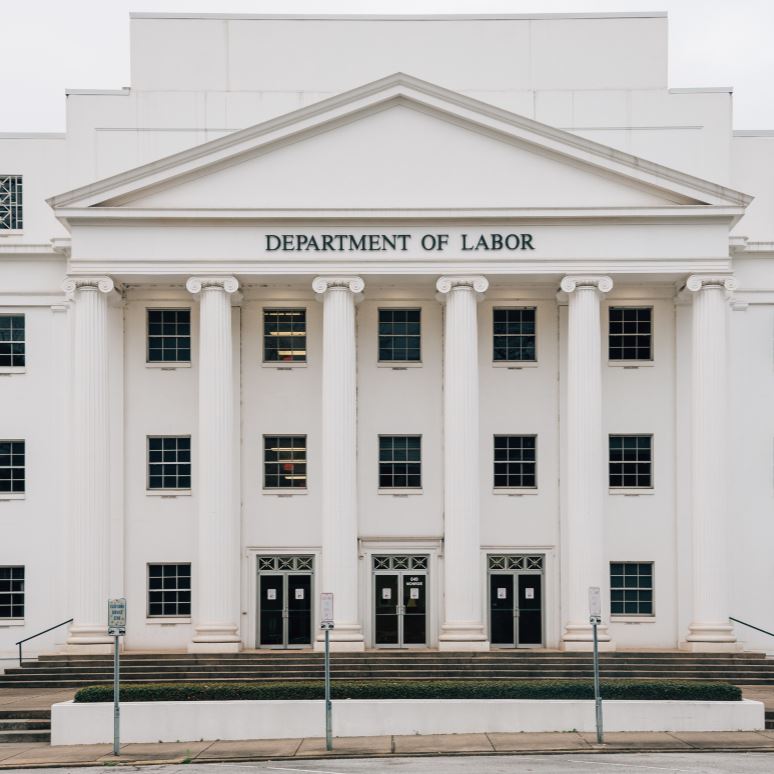On March 24, 2020, the United States Department of Labor (D.O.L.) released their first “Questions and Answers” on COVID-19 and the Families First Coronavirus Relief Act to address preliminary compliance questions. This is the D.O.L.’s first official release for use by employers and employees to provide clarification on the provisions on the FFCRA. In addition to the Q&A document, they also released two fact sheets: one for employees and the other for employers. All materials are available on the D.O.L.’s website, and the links are also found at the bottom of this article under “resources.”
The D.O.L. plans to continue these efforts to provide further clarification, additional information, and compliance assistance for both employers and employees.
This is a very fluid issue and, therefore, will continue to change. We are working diligently to bring you the latest news and updates that may impact you and your employees.
Updates & Important Reminders
Families First Coronavirus Response Act (FFCRA) – Effective Date Change
The D.O.L. announced the effective date for FFCRA had been modified. The Act is effective as of April 1, 2020 (instead of April 2, 2020). Therefore, the Act will apply to leave taken between April 1, 2020, through December 31, 2020.
Employer Notice Requirements for FFCRA
All employers must conspicuously post a notice regarding the requirements of the EPLSA in physical work locations. The U.S. D.O.L is to provide a model notice within seven days after enactment (scheduled release date of March 25, 2020). There is no requirement to maintain a handbook policy or actively notify employees who are working remotely. However, employers should consider electronically distributing the requirements of the EPLSA if they are not posting it in physical workspaces due to office closures.
OSHA Reporting during COVID-19
The Occupational Safety and Health Administration (OSHA) requires employers to record work-related injuries and illnesses. The determination was made by OSHA that COVID-19 falls under the illness reporting requirements as defined as “an abnormal condition or disorder both acute and chronic illnesses.”
More explicitly, only confirmed cases of COVID-19 should be reported. However, the employer needs to assess whether the confirmed case was “work-related” as defined under the rule. Things like the type of work, risk of person-to-person transmission, and work environment should all be taken into consideration when determining if the illness was “work-related.”
Update I-9 Compliance Requirements
The Department of Homeland Security announced relaxed requirements for completing I-9 documents during this public health crisis on March 20, 2020.
Due to the quarantine or Stay at Home orders put in place, employers “will not be required to review the employee’s identity and employment authorization documents in the employee’s physical presence.” This doesn’t mean employers do not have to inspect documents. Instead, documents must be checked remotely by either video link, fax, email, or some other method to obtain and examine documents. The three -day timeframe for completing this has not changed.
Once business operations return to normal, employers should still physically inspect documents and complete Section 2. “Employers should enter “COVID-19” as the reason for the physical inspection delay in Section 2 Additional Information field. Once documents have been physically inspected, the employer should add “documents physically examined” with the date of the physical inspection.
If employees were temporarily laid off due to lack of financial resources because of a stay at home order, Section 3 of the I-9 form could be used as appropriate.
Relationship to other Leave Laws and Agreements
Employers should still comply with any other federal, state, or local leave laws to which they are subject, as well as any collective bargaining agreements. The FFRCA does not supersede or preempt any other law.
D.O.L. Questions and Answers Update as of 3/24/2020
Relationship to other Leave Laws and Agreements
The D.O.L. released a preliminary “Questions and Answers” page on March 24, 2020, attempting to answer some initial compliance questions related to the FFCRA. Below is a recap of clarification received in the first update.
What is the effective date of the Families First Coronavirus Response Act (FFCRA), which includes the Emergency Paid Sick Leave Act and the Emergency Family and Medical Leave Expansion Act?
The FFCRA’s paid leave provisions are effective on April 1, 2020 and apply to leave taken between April 1, 2020, and December 31, 2020.
As an employer, how do I know if my business is under the 500-employee threshold and, therefore, must provide paid sick leave or expanded family and medical leave?
You have fewer than 500 employees if, at the time your employee’s leave is to be taken, you employ fewer than 500 full-time and part-time employees within the United States, which includes any State of the United States, the District of Columbia, or any Territory or possession of the United States.
In making this determination, you should include employees on leave; temporary employees who are jointly employed by you and another employer (regardless of whether the jointly-employed employees are maintained on only your or another employer’s payroll); and day laborers supplied by a temporary agency (irrespective of whether you are the temporary agency or the client firm if there is a continuing employment relationship)—workers who are independent contractors under the Fair Labor Standards Act (FLSA), 29 U.S.C. § 203(r), rather than employees, are not considered employees for purposes of the 500-employee threshold.
Typically, a corporation (including its separate establishments or divisions) is considered to be a single employer, and its employees must each be counted towards the 500-employee threshold. Where a corporation has an ownership interest in another corporation, the two corporations are separate employers unless they are joint employers under the FLSA with respect to certain employees. If two entities are found to be joint employers, all of their common employees must be counted in determining whether paid sick leave must be provided under the Emergency Paid Sick Leave Act and expanded family and medical leave must be provided under the Emergency Family and Medical Leave Expansion Act.
In general, two or more entities are separate employers unless they meet the integrated employer test under the Family and Medical Leave Act of 1993 (FMLA), 29 C.F.R. § 825.105. If two entities are an integrated employer under the FMLA, then employees of all entities making up the integrated employer will be counted in determining employer coverage for purposes of expanded family and medical leave under the Emergency Family and Medical Leave Expansion Act.
Does the FFCRA apply to private sector employers with 500 or more employees?
No. Private sector employers are only required to comply with the Acts if they have fewer than 500 employees. Employers with more than 500 employees can elect to extend the same benefits to their employees; however, they are not eligible for the tax relief credit.
How do businesses with fewer than 50 employees take advantage of the small business exemption if providing childcare-related paid sick leave and expanded family and medical leave would jeopardize the viability of the business as a going concern?
To elect this small business exemption, you should document why your business with fewer than 50 employees meets the criteria set forth by the Department, which will be addressed in more detail in forthcoming regulations. You should not send any materials to the D.O.L. when seeking a small business exemption for paid sick leave and expanded family and medical leave.
How do I count hours worked by a part-time employee for purposes of paid sick leave or expanded family and medical leave?
A part-time employee is entitled to leave for his or her average number of work hours in two weeks. Therefore, you calculate hours of leave based on the number of hours the employee is typically scheduled to work.
- If the regular hours scheduled are unknown, or
- If the part-time employee’s schedule varies, use a six-month average to calculate the average daily
- If this calculation cannot be made because the employee has not been employed for at least six months, use the number of hours that you and your employee agreed that the employee would work upon And if there is no such agreement, you may calculate the appropriate number of hours of leave based on the average hours per day the employee was scheduled to work over the entire term of his or her employment.
Such a part-time employee may take paid sick leave for this number of hours per day for up to two weeks and may take expanded family and medical leave for the same number of hours per day up to ten weeks after that.
When calculating pay due to employees, must overtime hours be included?
Yes. The Emergency Family and Medical Leave Expansion Act require you to pay an employee for hours the employee would have been regularly scheduled to work even if that is more than 40 hours in a week. However, the Emergency Paid Sick Leave Act requires that paid sick leave be paid only up to 80 hours over two weeks.
Please note that pay does not need to include a premium for overtime hours under either the Emergency Paid Sick Leave Act or the Emergency Family and Medical Leave Expansion Act.
How do you calculate the regular rate of pay for purposes of the FFCRA?
For purposes of the FFCRA, the regular rate of pay used to calculate paid leave is the average of the employee’s regular rate over a period of up to six months before the date on which they take leave.
- If they have been employed less than six months, the regular rate used to calculate your paid leave is the average of the employee’s regular rate of pay for each week they have worked for the
- If they are paid with commissions, tips, or piece rates, these wages will be incorporated into the above
You can also compute this amount for each employee by adding all compensation that is part of the regular rate over the above period and divide that sum by all hours actually worked in the same period.
Can an employee take 80 hours of paid sick leave for self-quarantine and then another amount of paid sick leave for another reason provided under the Emergency Paid Sick Leave Act?
No. They may take up to two weeks—or ten days—(80 hours for a full-time employee, or for a part-time employee, the number of hours equal to the average number of hours that the employee works over a typical two-week period) of paid sick leave for any combination of qualifying reasons. However, the total number of hours for paid sick leave is capped at 80 hours under the Emergency Paid Sick Leave Act.
If an employee is home with a child because his or her school or place of care is closed, or childcare provider is unavailable, can they get paid sick leave, expanded family and medical leave, or both—how do they interact?
They may be eligible for both types of leave, but only for a total of 12 weeks of paid leave. They may take both paid sick leave and expanded family and medical leave to care for their child whose school or place of care is closed, or childcare provider is unavailable, due to COVID-19 related reasons.
Is all leave under the FMLA now paid leave?
No. The only type of family and medical leave that is paid leave is expanded family and medical leave under the Emergency Family and Medical Leave Expansion Act when such leave exceeds ten days. This includes only leave taken because the employee must care for a child whose school or place of care is closed, or childcare provider is unavailable, due to COVID-19 related reasons.
Are the paid sick leave and expanded family and medical leave requirements retroactive?
No. Any time taken or provided before the effective date of April 1, 2020 would not be eligible for tax relief credit.
Resources
- https://www.dol.gov/agencies/whd/pandemic
- https://www.dol.gov/agencies/whd/pandemic/ffcra-employee-paid-leave
- https://www.dol.gov/agencies/whd/pandemic/ffcra-employer-paid-leave
- https://www.dol.gov/agencies/whd/pandemic/ffcra-questions
- https://www.cdc.gov/coronavirus/2019-ncov/
- https://www.uscis.gov/i-9
- https://www.osha.gov/recordkeeping/index.html
- https://www.littler.com/publication-press/publication/osha-recording-and-reporting-cases-covid-19








